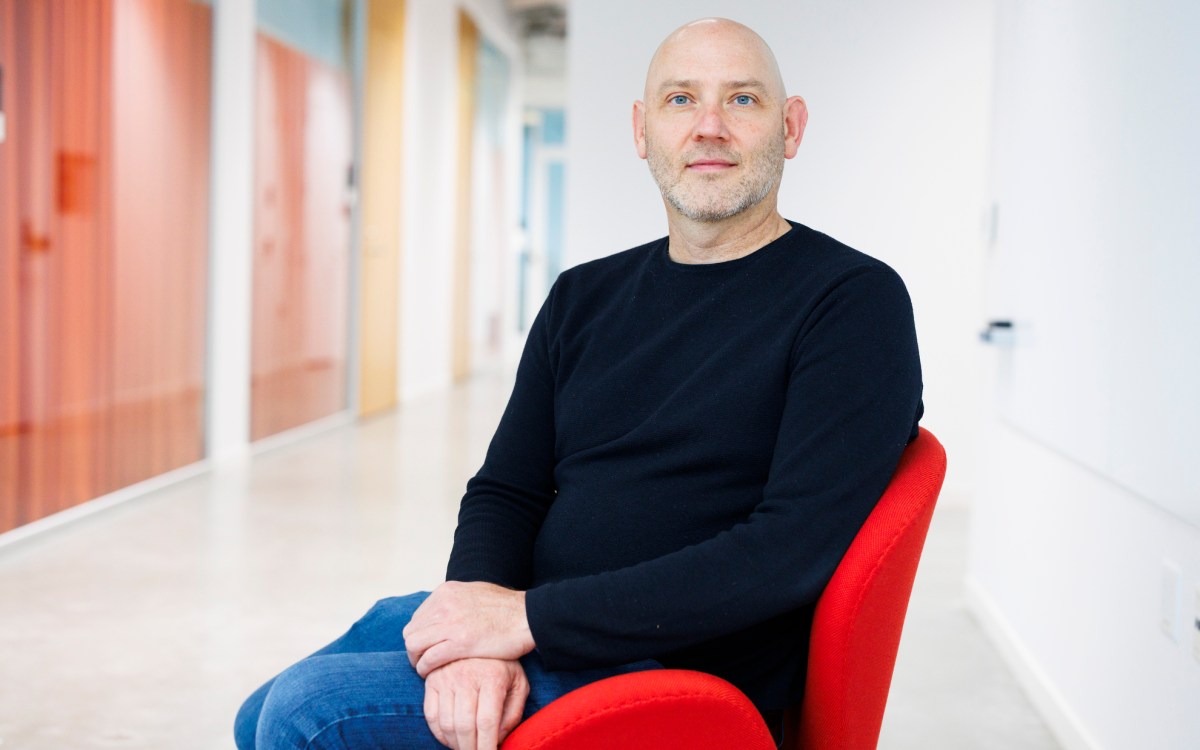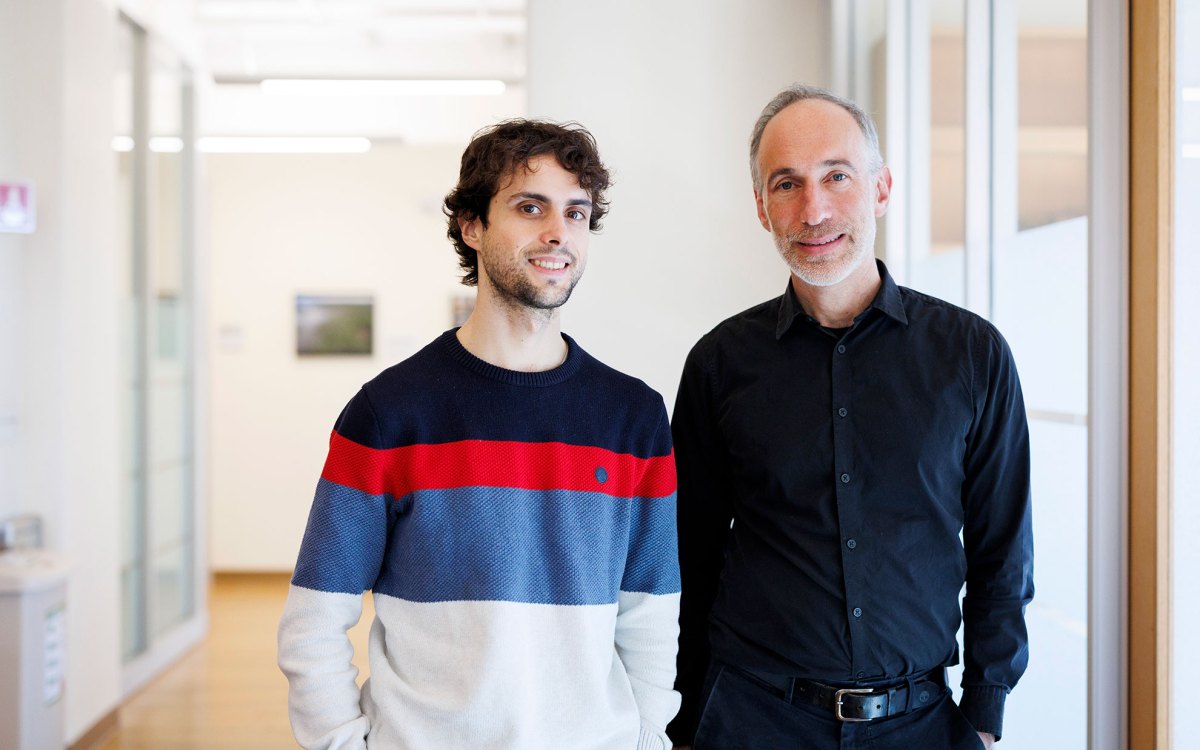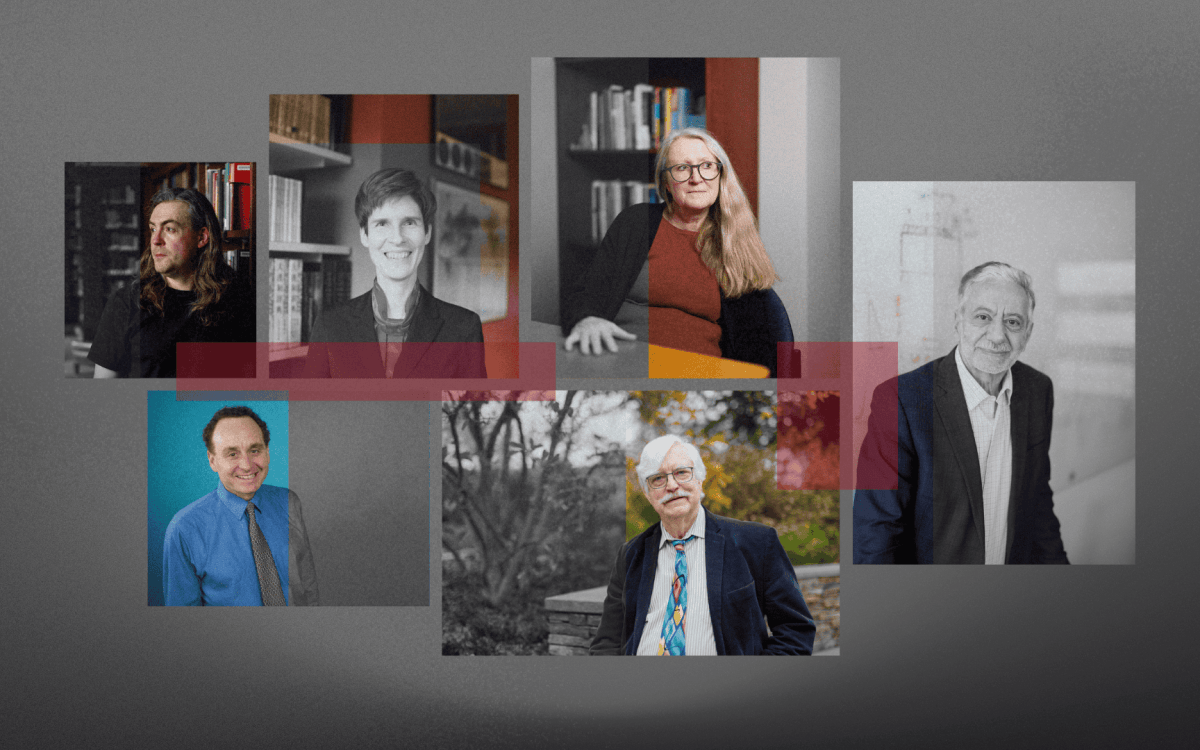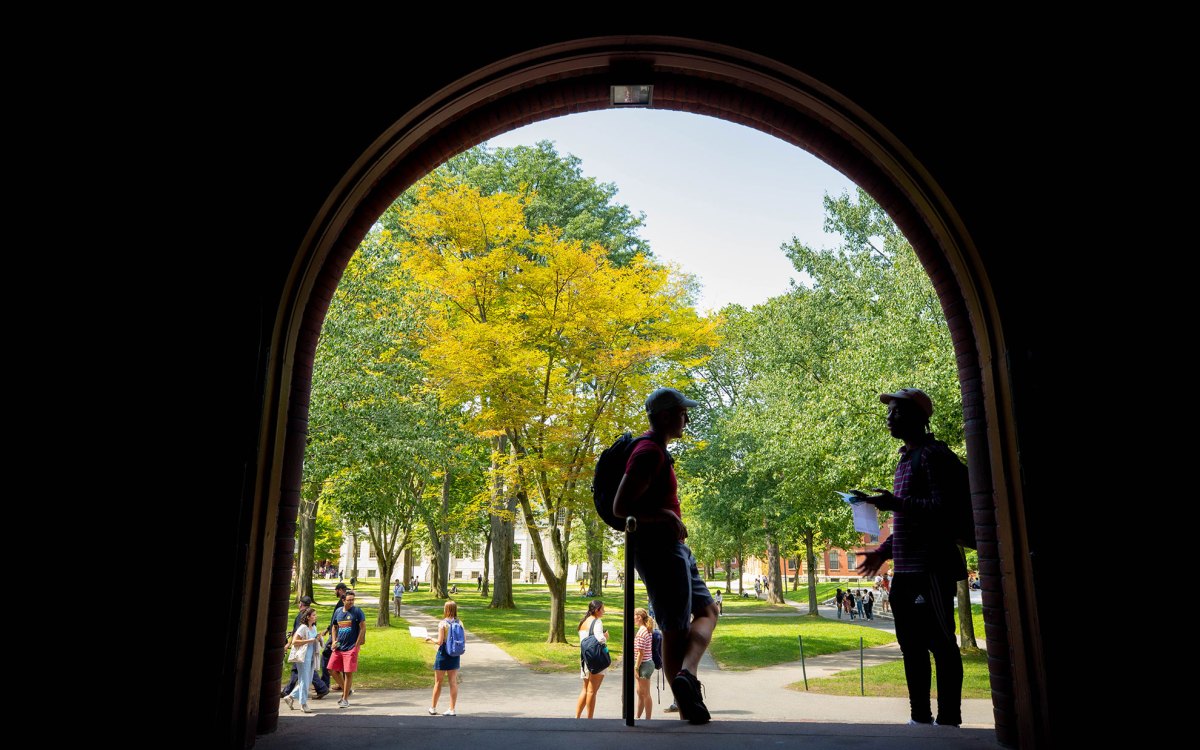Science & Tech
-

Cracking the code of why, when some choose to ‘self-handicap’
New research also offers hints for devising ways to stop students from creating obstacles to success

-

How memory works (and doesn’t)
In podcast, scientists explain why remembering is more reconstruction than replay
-

Mapping our deep-rooted relationship with medicinal plants
Regions with longer histories of human settlement tend to have greater variety, study finds
-

Technically, it’s possible. Ethically, it’s complicated.
Surge in AI use heightens demand for Harvard program that examines social consequences of computer science work
-

Solving mystery at tip of South America
Study finds previously unknown ancient lineage of indigenous people, which gave rise to surprisingly diverse mix of cultures

-

Is AI dulling our minds?
Experts weigh in on whether tech poses threat to critical thinking, pointing to cautionary tales in use of other cognitive labor tools
-
Two teams address Harvard planning and development
To meet the increased physical planning and development needs of the faculties and departments on Harvard’s existing campus while simultaneously preparing for first-phase development in Allston, the Harvard Planning + Allston Initiative (HPAI) – the team that coordinated University-wide physical planning – has been reconfigured into two University organizations.
-
Brigham pilot program connects people with family histories
A Harvard Medical School instructor at Brigham and Women’s Hospital is spearheading a pilot project to encourage Brigham employees to gather detailed family health histories to give health care officials an edge fighting inherited diseases.
-
The first word on nouns and verbs
Since humans learned to speak, they have put their words into two basic categories, nouns and verbs. Nouns denote objects; verbs refer to actions. Dictionaries of specialized words have been added by bankers, lawyers, scientists, and clergy, but this core distinction remains.
-
Controlling long-term memory
Harvard University biologists have identified a molecular pathway active in neurons that interacts with RNA to regulate the formation of long-term memory in fruit flies. The same pathway is also found at mammalian synapses, and could eventually present a target for new therapeutics to treat human memory loss.
-
Gift from Jordans advances FAS, health research
The Faculty of Arts and Sciences (FAS) and disease-fighting researchers across Harvard are the recipients of Jerry and Darlene Jordan’s recent $10 million gift to the University. The gift is just the latest expression of the Jordans’ generosity: Over the years, Jerry ’61, M.B.A. ’67, and Darlene Jordan have funded financial aid, athletics, and other programs at Harvard College and the Business School.Five million dollars of their gift is designated for the Faculty of Arts and Sciences to help strengthen FAS programs, as well as enrich student life at the College.
-
Sidanius named professor of African American Studies
James H. Sidanius, a psychologist best known for establishing and refining an influential theory of social dominance along lines of gender, age, race, and class, has been named professor of psychology and of African and African American Studies in Harvard University’s Faculty of Arts and Sciences, effective Jan. 1.
-
Neutron star swaps lead to short gamma-ray bursts
Gamma-ray bursts are the most powerful explosions in the universe, emitting huge amounts of high-energy radiation. For decades their origin was a mystery. Scientists now believe they understand the processes…
-
Two exiled stars are leaving our galaxy forever
TV reality show contestants aren’t the only ones under threat of exile. Astronomers using the MMT Observatory in Arizona have discovered two stars exiled from the Milky Way galaxy. Those…
-
Berkman Center helps launch StopBadware campaign
The problems caused by badware have very serious implications, both for every day use of computers, and for the long-term viability of the open Internet. On Jan. 25, 2006, the…
-
Cosmic jet looks like giant tornado in space
While examining a region where new stars are forming with NASA’s Spitzer Space Telescope, astronomers found a surprise – an object that looks like a giant tornado in space. The…
-
There’s more to the North Star than meets the eye
We tend to think of the North Star, Polaris, as a steady, solitary point of light that guided sailors in ages past. But there is more to the North Star…
-
Harvard studies Katrina survivors
A new project, funded by a $1 million grant from the National Institute of Mental Health, will recruit Katrina survivors around the country to serve on the Hurricane Katrina Community…
-
Ancient humans brought bottle gourds to Americas from Asia
Thick-skinned bottle gourds widely used as containers by prehistoric peoples were likely brought to the Americas some 10,000 years ago by individuals who arrived from Asia, according to a new…
-
Report documents importance of playlists
Drawing from an early-adopter survey conducted through Gartner, Harvard College student Derek Slater and Mike McGuire, Gartner research director, found that consumer-to-consumer recommendation tools, like playlists, enable consumers to actively…
-
Making the world’s smallest gadgets even smaller
You may not have noticed, but the smallest revolution in world history is under way. Laboratories and factories have begun to make medical sensors and computer-chip components smaller than a…
-
Early steps discovered in protein-making process
Translation, the synthesis of protein from an mRNA template, has long been considered a benign sequela to transcription. After all, dysregulation of transcription causes a multitude of human disorders, including…
-
A star that looks like a planet
Astronomers using NASA’s Spitzer Space Telescope have discovered a remarkably small brown dwarf surrounded by a dusty disk. The brown dwarf contains only about eight times the mass of Jupiter,…
-
Einstein’s rings in space
In a 1936 paper, Albert Einstein described how the gravitational field from a massive object can warp space and thereby deflect light. In special cases, the light from a distant…
-
A harvest of dozens of new stars
A new infrared image of the reflection nebula NGC 1333, located about 1,000 light-years from Earth in the constellation Perseus, reveals dozens of stars like the Sun but much younger.…
-
Cigarette manufacturers developed candy-flavored brands to target youth
Despite assurances from cigarette makers that they no longer target the youth market, Harvard School of Public Health researchers found that new brands are being marketed to young smokers and…
-
Survey: Many seniors don’t understand Medicare drug benefit
When asked how well they understand the new Medicare drug benefit, more than six in 10 seniors (61 percent) say ‘not too well’ or ‘not at all,’ while more than…
-
Space telescope captures cosmic ‘Mountains of Creation’
Captured by the Spitzer Space Telescope’s infrared eyes, a new majestic image resembles the iconic “Pillars of Creation” picture taken of the Eagle Nebula in visible light by NASA’s Hubble…
-
Cosmic cloudshine
Hubble’s iconic images include many shots of cosmic clouds of gas and dust called nebulae. For example, the famous “Pillars of Creation” mark the birthplace of new stars within the…
-
Study shows escalating climate change impacts
The Center for Health and the Global Environment at Harvard Medical School, along with co-sponsors Swiss Re and the United Nations Development Programme, has released a study showing that climate…
-
Taking a look at how ant (and human) societies might grow
Edward O. Wilson has learned a great deal about life by studying ant societies. In this knowledge, he finds parallels between the social interactions of insects and those of birds,…
-
First edition of HapMap released
A flurry of high-profile scientific manuscripts published in October 2005 describe both the content and uses of HapMap, a catalog that maps human genetic variation and relates it both to…
-
Mercury advisories may do more harm than good
A study warns that if advisories cause fish consumption in the general public to drop out of fear about the effects of mercury, substantial nutritional benefits could be lost. The…
-
It takes three Smithsonian observatories to decipher one mystery object
In an exercise that demonstrates the power of a multiwavelength investigation using diverse facilities, astronomers at the Harvard-Smithsonian Center for Astrophysics (CfA) have deciphered the true nature of a mysterious…
-
Black holes aren’t so black
As gas is pulled into a black hole by its strong gravitational force, the gas heats up and radiates. That radiation can be used to illuminate the black hole and…
-
Lukin illuminates quantum science
Mikhail Lukin thinks that devices based on quantum science are at the same stage as radios were about 100 years ago. To catch up, the recently tenured professor of physics…


